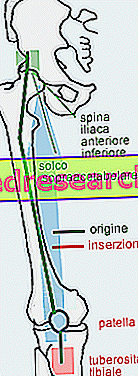CLOX ® is a drug based on Ticlopidine hydrochloride.
THERAPEUTIC GROUP: Antithrombotics.
IndicationsAction mechanismStudies and clinical effectiveness Usage and dosage instructionsWarnings Pregnancy and lactationInteractionsContraindicationsUndesirable effects
Indications CLOX ® Ticlopidina
CLOX ® is indicated in the prevention of cardiovascular and cerebral ischemic events in patients at risk for thrombosis (infarcted, suffering from arteriopathy and angina, with previous ischemic events).
CLOX ® is also used to prevent obliteration of the aorto-coronary by-passes, and to avoid the formation of thrombi in extra-corporeal circulation, in hemodialysis and in the thrombosis of the central vein.
In particular categories of patients at risk, more precisely for patients with previous infarct or ischemic history, the use of CLOX ® should be subordinated to the therapeutic ineffectiveness of acetylsalicylic acid.
Mechanism of action CLOX ® Ticlopidine
Ticlopidine hydrochloride, taken orally by CLOX ® is completely absorbed at the gastro-intestinal level, reaching maximum plasma concentration after 2 hours from administration, and maximum therapeutic efficacy only after a few days of continuous treatment.
The antithrombotic therapeutic action is supported by the anti-platelet aggregation action, exercised through the inhibition of the binding of fibrinogen to the gp IIb / IIIa receptor expressed on the platelet surface.
The importance of this link lies in the formation of the clot; in fact, in the presence of ADP (also released by platelets in the activation phase), the receptor for fibrinogen passes into an active conformation, recognizing and effectively binding fibrinogen, which - placing itself between the various platelets - acts as a bridge facilitating the stabilization of hemostatic cap.
The appearance of the first therapeutic effects is subject to the irreversibility of the aforementioned inhibition, which can be reached only after two continuous days of drug therapy and which persists for a limited period of time, necessary for the regeneration of new platelets.
In addition to the aforementioned action, ticlopidine was particularly effective in the prevention of thrombotic diseases, as it proved to be useful in reducing erythrocyte hyper-aggregation, favoring its filterability.
After a few hours of activity, ticlopidine is metabolised to inactive liver metabolites, and eliminated predominantly through the faeces.
Studies carried out and clinical efficacy
P2Y INHIBITORS, FUTURE PERSPECTIVES
Antithrombotics such as ticlopidine exert their therapeutic effect by inhibiting platelet aggregation through the irreversible blockage of the P2Y receptor, expressed on the surface of the platelets and useful for facilitating aggregation. This mode of action, however, exposes the patient to potential risks due to an extension of the inhibitory action, which can be realized in the increased risk of bleeding. In this regard, several pharmaceutical companies are experimenting with new active ingredients capable of exercising reversible inhibition of the receptor, and consequently reducing the side effects associated with therapy.
2.CLOPIDOGREL VS TICLOPIDINE IN THE TREATMENT OF THE ACUTE CORONARY SYNDROME
The PLATONE study showed that ticlopidine can be decidedly more effective than clopidogrel in the reduction of ischemic events in patients with acute coronary syndrome and renal failure. More precisely, ticlopidine guaranteed a reduction in the ischemic endpoint of 22%, a decidedly higher percentage than in the 17% obtained by clopidogrel.
3. GENETIC ASPECTS OF THYCLOPIDINE THERAPY
Given the hepatic metabolism of ticlopidine, it has been hypothesized that polymorphic variants of cytochromial enzymes involved in the metabolism of these active ingredients could in some way vary their pharmacokinetic properties, therefore their therapeutic and safety profile. The study in question shows how - unlike clopidogrel (an active ingredient similar to ticlopidine) - ticlopidine is not affected by these genetic variants, thus maintaining a high safety profile.
Method of use and dosage
CLOX ® 250 mg tablets of ticlopidine hydrochloride : the therapy - usually prolonged over time - involves taking 1-2 tablets a day with meals.
The duration of the therapy and the formulation of the correct dosage are established by the doctor after a careful evaluation of the patient's physiopathological conditions and his therapeutic goal.
IN ANY CASE, BEFORE TAKING CLOX ® Ticlopidine, THE REQUIREMENT AND CHECK OF YOUR DOCTOR IS NECESSARY.
Warnings CLOX ® Ticlopidina
Like other antithrombotic drugs, the intake of CLOX ® should be preceded and flanked, at least twice a week, by a monitoring of the patient's coagulation capacity and hematology, in order to avoid potentially dangerous side effects for the health of the subject .
The increase in bleeding time, induced by ticlopidine, requires the suspension of therapy during pathologies with an increased risk of bleeding, in the case of surgical interventions (in this case the suspension should take place at least a week before) or dental treatments.
Although in itself the drug does not cause significant alterations in the ability to drive vehicles or use machinery, some side effects induced by the active ingredient could reduce the patient's perceptive abilities.
PREGNANCY AND BREASTFEEDING
The absence of clinical trials related to the effects on the health of the fetus does not allow to establish the safety profile of ticlopidine when taken during pregnancy.
For this reason and for the hemodynamic effects induced by the active ingredient, the intake of CLOX ® is contraindicated during the period of pregnancy and lactation.
Interactions
In order to avoid dangerous side effects, such as excessive and prolonged bleeding and bleeding, it is necessary to avoid the concomitant administration of non-steroidal anti-inflammatory drugs, anticoagulants and antiplatelet agents (all drugs that could accentuate the biological effects of ticlopidine).
Furthermore, the effects of this active ingredient on the corpuscular component of the blood could be enhanced by the simultaneous intake of potentially myelotoxic drugs.
Contraindications CLOX ® Ticlopidine
Known for the prolonging effect of the bleeding time induced by CLOX ®, ticlopidine therapy is contraindicated in patients suffering from coagulation disorders, injuries, or traumas or pathologies at risk of bleeding.
CLOX ® is also contraindicated in cases of liver disease, leukopenia, thrombocytopenia, agranulocytosis, or hypersensitivity to one of its components.
Undesirable effects - Side effects
Clinical trials and post-marketing monitoring have shown side effects such as increased bleeding time, increased risk of bleeding, leukopenia, thrombocytopenia, agranulocytosis, gastro-intestinal disorders, increased transaminases, skin rashes, dizziness and purpura.
In most cases the aforementioned reactions tend to gradually regress with the suspension of drug therapy.
Note
CLOX® can be sold only under medical prescription.



